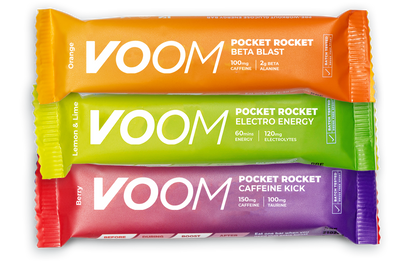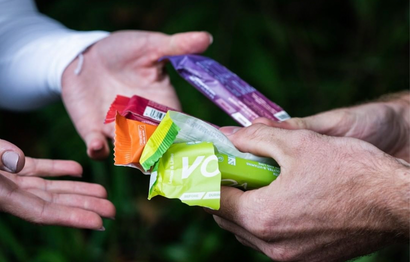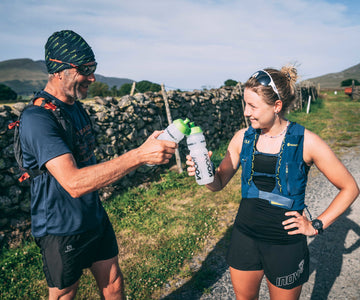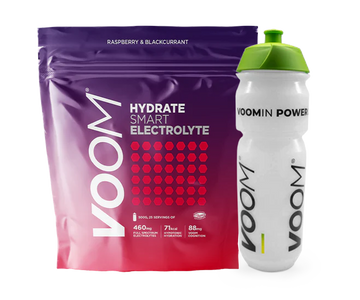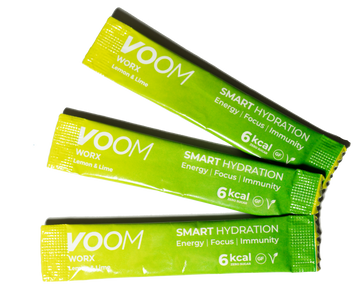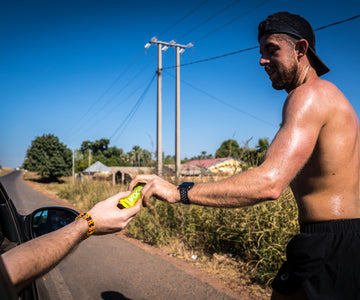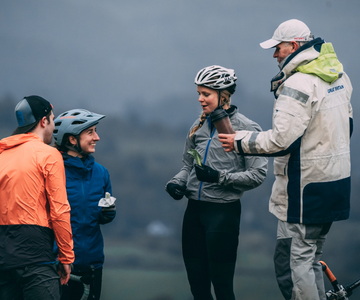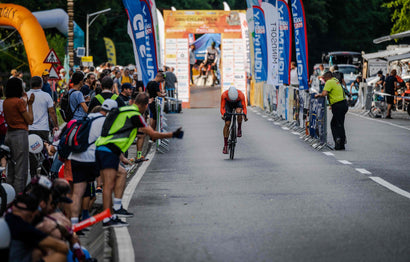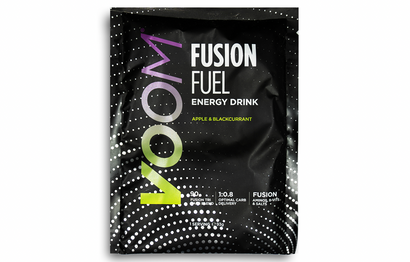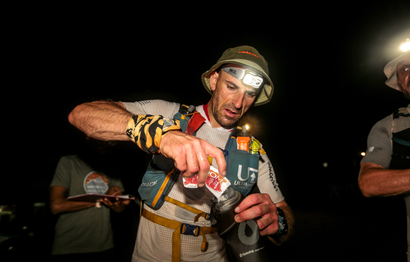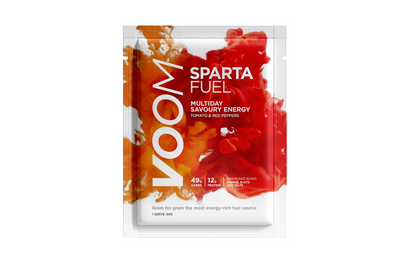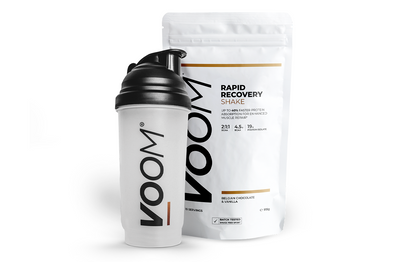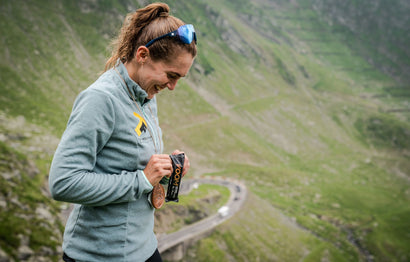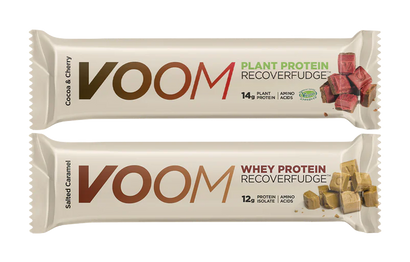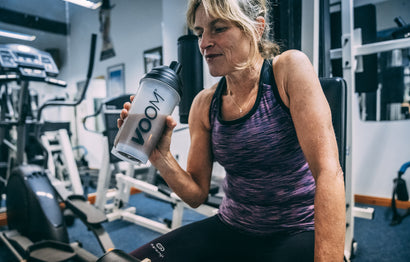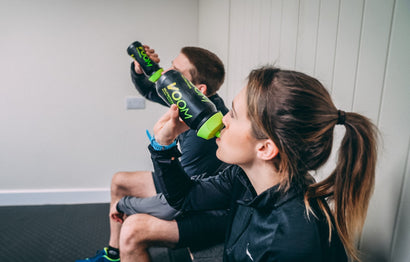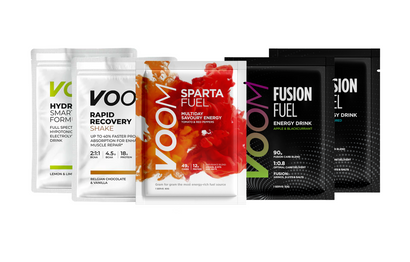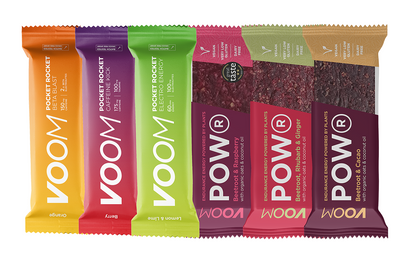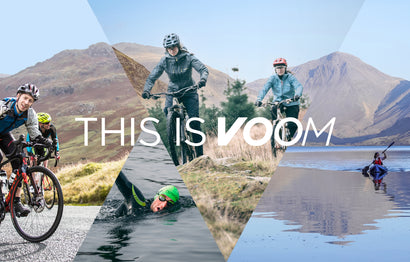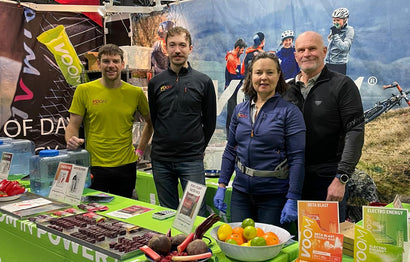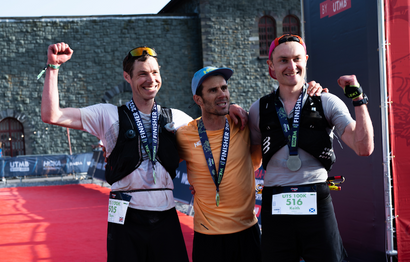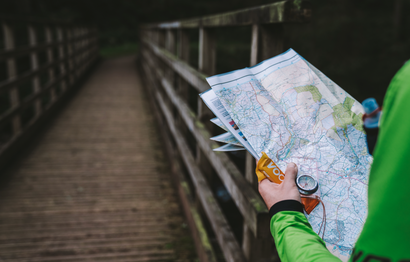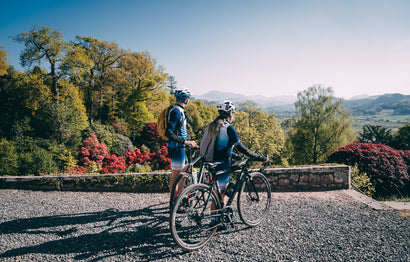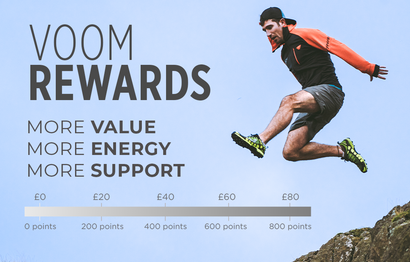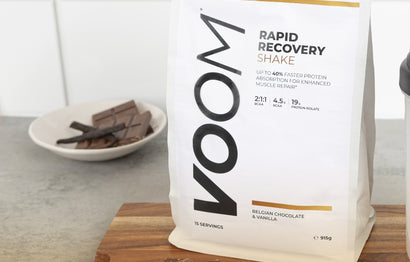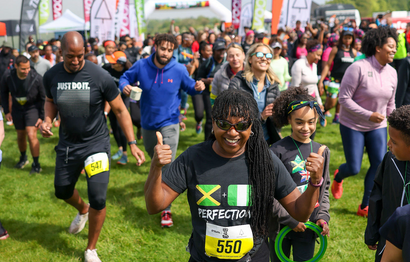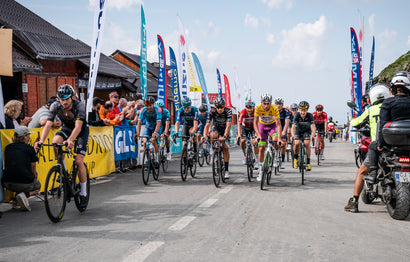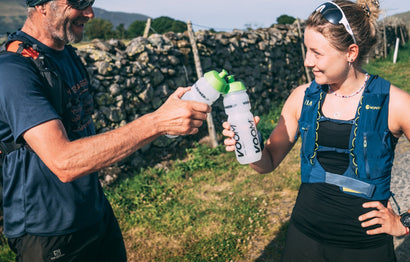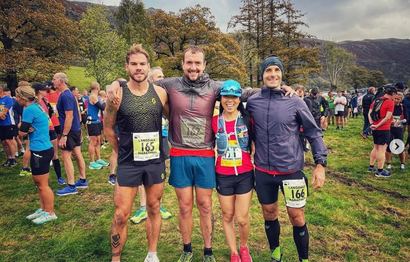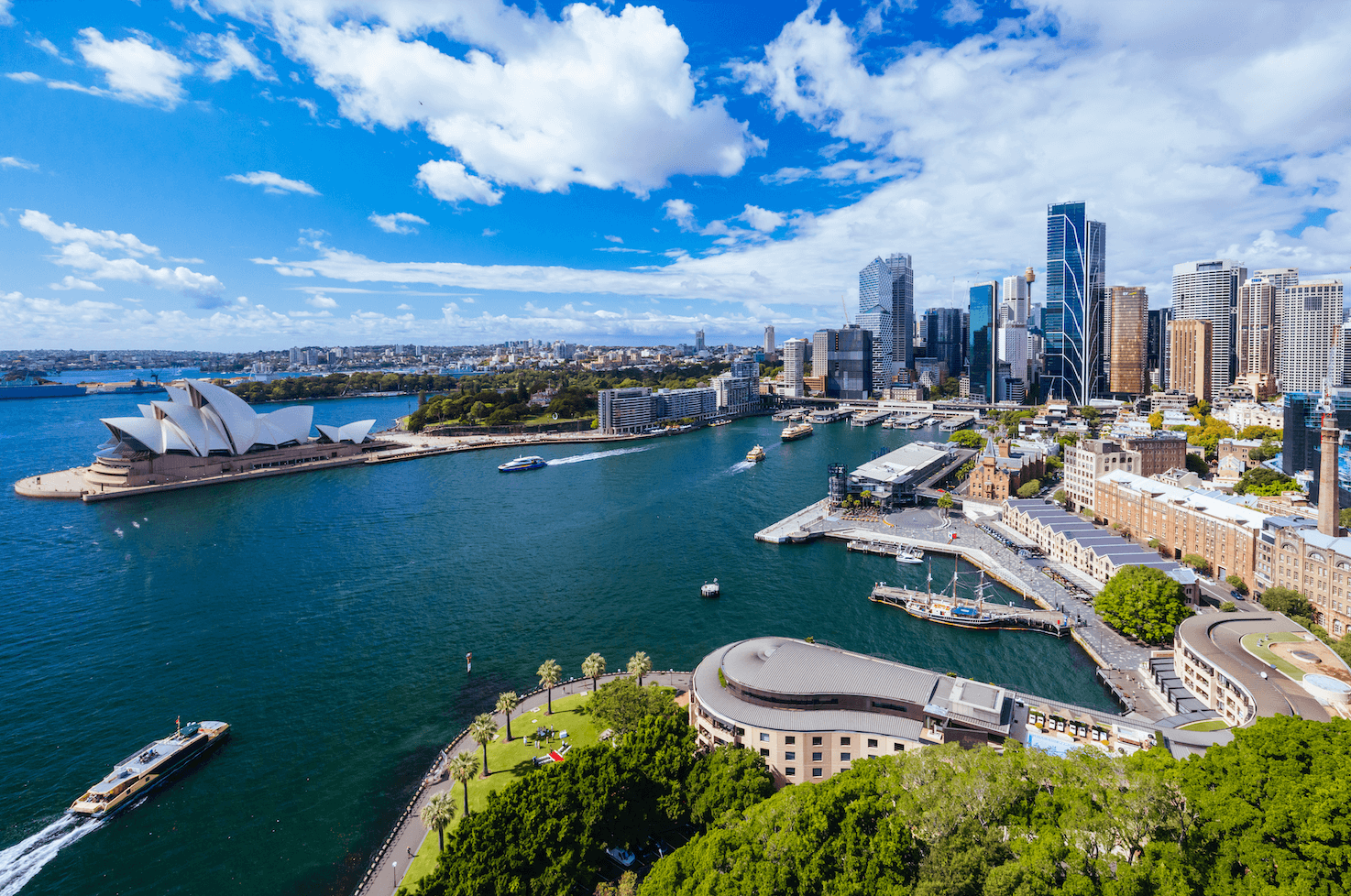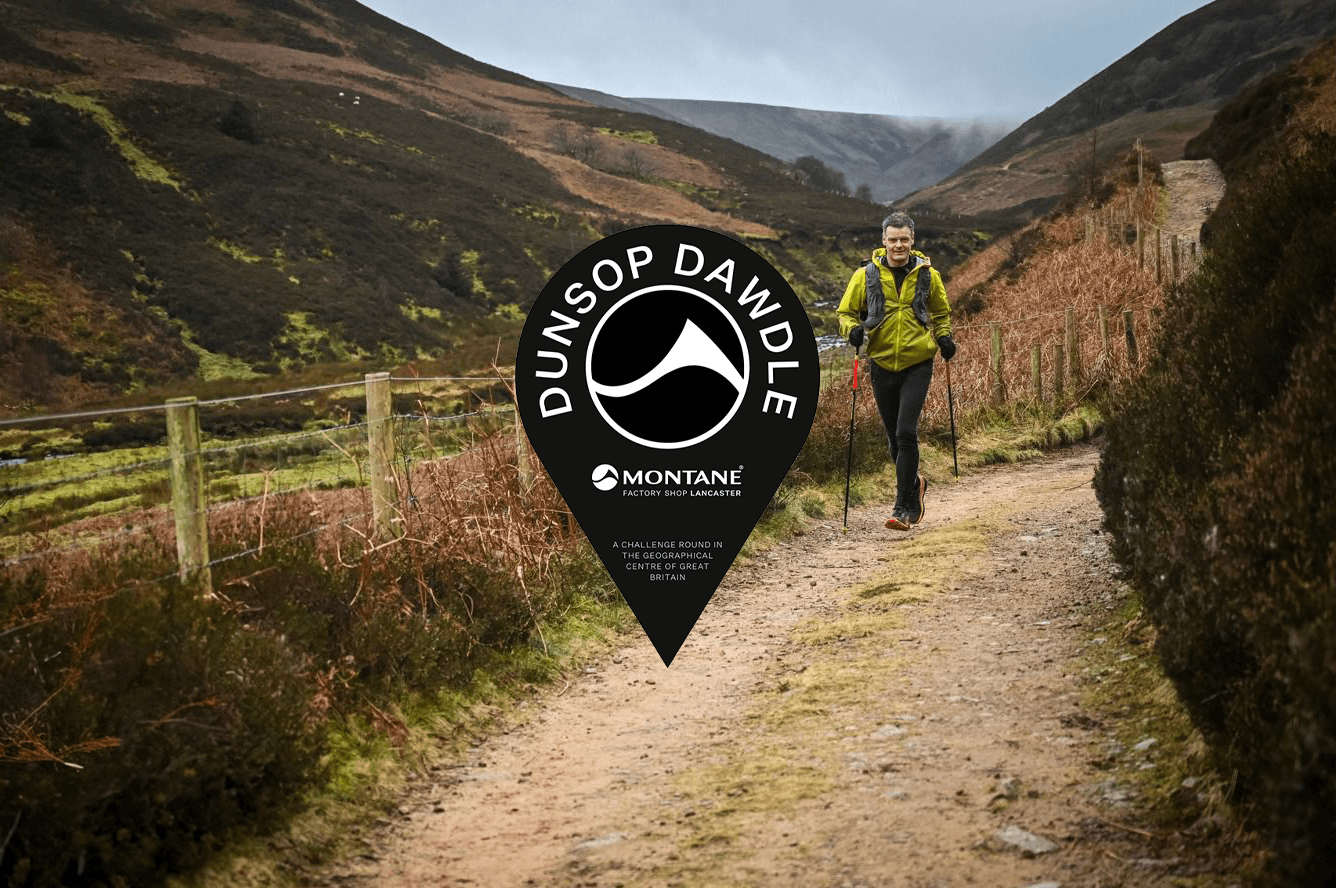Optimising your hydration and nutrition whilst skiing helps ensure you’re able to enjoy the experience, and the VOOM range provides some easy and effective ways to do so. Whether you’re off to do a season, looking to race or just enjoy a holiday with friends and family, nailing your hydration and nutrition is equally important.
We spoke to our Team GB snowsport ambassadors who shared their fuelling strategy pre, during & post race.
What should I incorporate into my diet on a weekly basis?
“Currently I’m on a bulk diet, meaning I’m basically eating all of the time. I’m eating fruit and vegetables every day along with chicken, which enables me to hit my protein intake goals. I also have a cheat meal once a week, which consists of pizza or burger, this allows me to make my clean eating diet work a little better.” - Tommy Dade
Directly before the race, say 45 - 60 minutes before the start, an energy snack can top up carbohydrate stores and elevate blood glucose. The VOOM Pocket Rocket range is perfect here as you can easily dose how many grams of carbs you take as the bar is in 4 chunks. We recommend the Beta Blast; in addition to the carbs to boost blood glucose it also contains beta alanine which elevates muscle carnosine levels, in turn buffering against lactic acid build up allowing you to push harder for longer! A full bar also contains 150mg of caffeine so you’re alert and ready to race. You may wish to take on 1-2 pieces of the Beta Blast bar before warming up, and another 1-2 pieces between warm up and race start.
What should I eat before a race or a day on the slopes?
As they say breakfast is one of the most important meals of the day and it’s not wrong. You should always aim to give your body enough time to digest your food before heading out onto the slopes. Aim for a meal that is high in carbs, relatively low fat, low fibre and you should certainly avoid greasy, fatty foods as these will take much longer to digest.
“I often find it a challenge to eat on race days due to nerves and adrenaline, however I tend to make sure I have porridge oats for breakfast with orange juice or a smoothie. Then I would have an Electro Energy bar and possibly a meat stick before a race along with VOOM’s Smart Hydrate formula.” - Tommy Dade

Directly before hitting the slopes, an energy snack can top up carbohydrate stores and elevate blood glucose. The VOOM Pocket Rocket range is perfect here as you can easily dose how many grams of carbs you take as the bar is in 4 chunks. We recommend the Beta Blast; in addition to the carbs to boost blood glucose it also contains beta alanine which elevates muscle carnosine levels, in turn buffering against lactic acid build up allowing you to ski harder for longer! A full bar also contains 150mg of caffeine so you’re alert and ready to ski.
How much should I drink?
It’s important to make sure you’re hydrated before a day out on the slopes - as much as a 5% level of dehydration can cause a 10% drop in performance, which can lead to a loss of concentration.
How much to drink varies greatly depending on body size, individual sweat rate, weather conditions, clothing choices and more, but we know the body can lose up to 1 - 2 litres of sweat per hour, especially in insulated ski gear.

To maintain hydration you should aim to consume 2-3 litres of fluid per day, aiming to avoid feeling thirsty, a reflex which is usually triggered at around 1% dehydration.
If you’re worried you may still be a little dehydrated before skiing, the fastest possible hydration will come from a hypotonic drink containing both electrolytes and some glucose. This mix will trigger co-transport of sodium and glucose molecules, speeding up absorption from the digestive tract into the body.
We recommend you aim to drink 500 - 800ml of fluid in the 2 hours at the end of the day, ideally containing electrolytes too. Even in cold conditions you will likely sweat more than you realise as you’re layered up for the low temperatures and windy ski lifts.
What should I eat after a ski race or day on the slopes?
Post-race nutrition is very important, and if you’re keen to be skiing again the following day it’s just as important as pre-race nutrition. It’s very easy to indulge after a long day on the slopes by grabbing the nearest snacks and a beer at apres but that certainly won’t aid muscle recovery.
Research has shown that 30 minutes after exercise is when the body is most receptive to absorbing nutrients so if you can take on something during that time, you’ll put yourself in the best place to maximise recovery. The two key macronutrients you want to get on board are carbohydrates, to replenish muscle and liver glycogen stores, and protein to repair and rebuild muscle tissue.
“After racing I have the VOOM Rapid Recovery shake along with a RecoverFudge to ensure my muscles recover faster and efficiently. Following that I tend to cook up something really quick and easy as I’m normally very tired, this could be something like a simple pasta dish with garlic and cheese.” - Tommy Dade

Protein is normally the first thing to come to mind however, consuming carbohydrates with your protein actually enhances uptake of amino acids. An optimal ratio of carbs to protein has been shown to be around 3:1; this ratio improves uptake of nutrients and causes an insulin spike which helps replenish glycogen stores more quickly.
The VOOM Protein RecoverFudge contains 10g of protein to repair muscles and the optimal 3:1 ratio to expedite glycogen replacement. If you don’t have access to RecoverFudge but can get to a local shop then chocolate milk is another good option with protein and carbs as well as calcium to replenish some of the electrolytes lost through sweat.
It’s also important to take on fluids after a day on the slopes as you’ll have sweated a considerable amount. It’s easy to just pop into a local shop for a fizzy drink to clench the thirst however taking on electrolytes to speed up the rehydration process and restore the body’s natural electrolyte balance for your next day on the slopes.
A balanced meal of high carbs, moderate levels of protein and fats within 2 - 3 hours of the event is also recommended. This helps continue the recovery process and maintain the body which will still be operating at an increased metabolic rate in response to the exercise.


